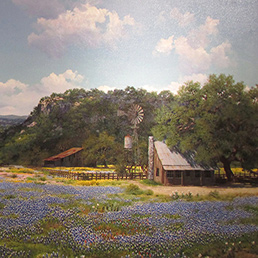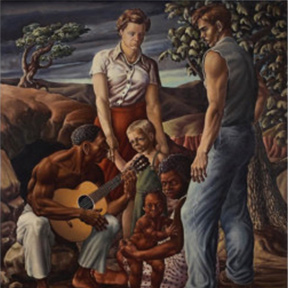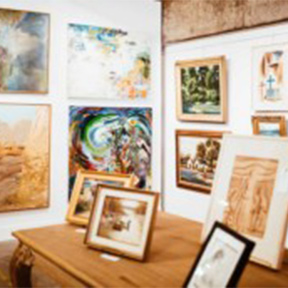- (214) 720-4044
- info@daviddike.com
- Mon - Fri: 10 am - 5 pm
Paxon, Edgar
Edgar Paxon
(Am. 1852-1919)
An artist of the vanishing West, Edgar Paxson was on the frontier just before Frederic Remington and Charles Russell, and his 1877 arrival in Montana occurred when Chief Joseph and the Nez Perce Indians were warring their way through Canada. Paxson became a close friend of Russell, who arrived in Montana in 1880, and the two men became the state’s most famous early or pioneer resident artists. Among the things they shared was a mutual pride at being self taught and a love of expressing aspects of Montana’s frontier history.
One of his major artistic subjects became the expedition of Lewis and Clark, which he completed in mural form, but his most sought after work are his small watercolors.
Another major paintings was Custer’s Last Battle on the Little Big Horn, containing more than two-hundred figures locked in mortal combat, and completed twenty-three years after the event. The work is in the permanent collection of the Buffalo Bill Historical Center in Cody, Wyoming and is revered for its attention to detail. Some of the Indian Chiefs in that battle served as Paxson’s models.
He was born in Orchard Park, upstate New York, and the only art training he had was from his father who was a sign painter and carriage decorator. He attended school in a log schoolhouse and also had one year at the Quaker run Friends’ Institute in East Hamburg. He was first inspired to go West from reading novels by James Fennimore Cooper and then in 1876, from hearing about the Battle of the Little Big Horn.
He went on ahead and in 1879, sent for his wife and child, whom he had left in Buffalo. In the meantime, he worked odd jobs as a cowboy, meat hunter, guard for the Overland Stage, and scout in the Nez Perce war, 1877-78. The family settled in Deer Lodge, Montana, where he worked as a commercial artist and sign painter, including decorating saloons and painting theater sets. In 1881, the Paxsons moved to Butte, where he found more lucrative business, and in 1905, he settled in Missoula. His appearance was described as “in the frontier style, with long hair, full mustache, and pointed goatee”. (Samuels 363). His studios in Butte and Montana were popular gathering places for artists visiting the West from other parts of the country.
For ten years, he was a member and government scout of the Montana National Guard, and during the Spanish-American War, he was in the Philippines for eight months.
During his career, he sought out participants in the Custer battle to paint their portraits. One of his primary sources was the Sioux chief, Gall, who gave Paxson many details of the actual fighting, and their relationship gave the artist much insight into the culture of the Sioux.
Paxson generally lauded Indian leaders for their dignity, honesty and strength, and one of his subjects was Charlo, Chief of the Flatheads. For each painting, he changed the pose and the wardrobe combination.
Other artistic endeavors include producing eight murals for the Missoula County courthouse of famous western persons and events (1912) and painting a frontispiece titled John Colter, the Discoverer of Yellowstone Park for the book, Your National Parks, by Enos Mills.
Sources: Michael David Zellman, 300 Years of American Art Harold and Peggy Samuels, Encyclopedia of Artists of the American West Peter Hassrick, Drawn to Yellowstone





